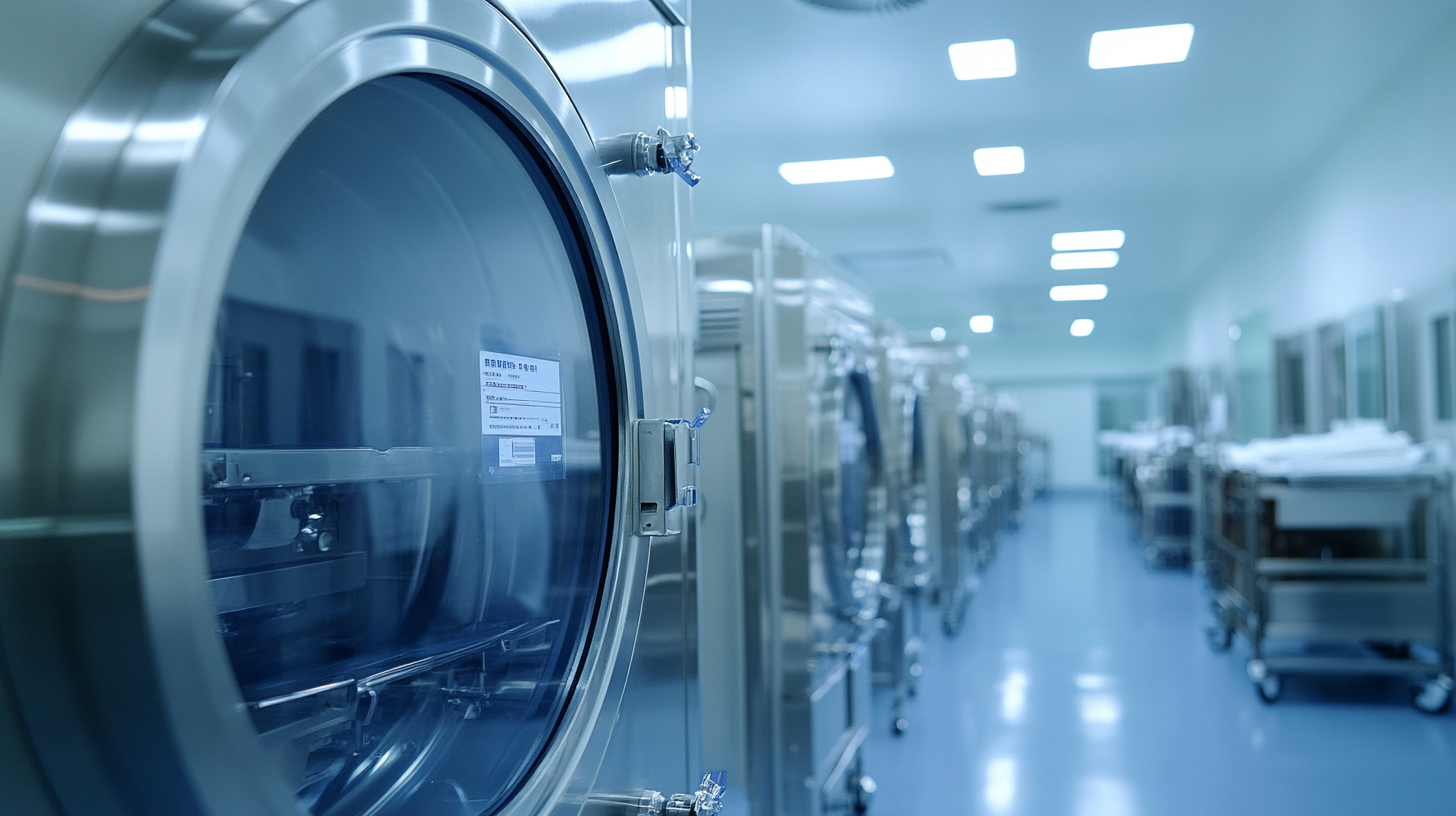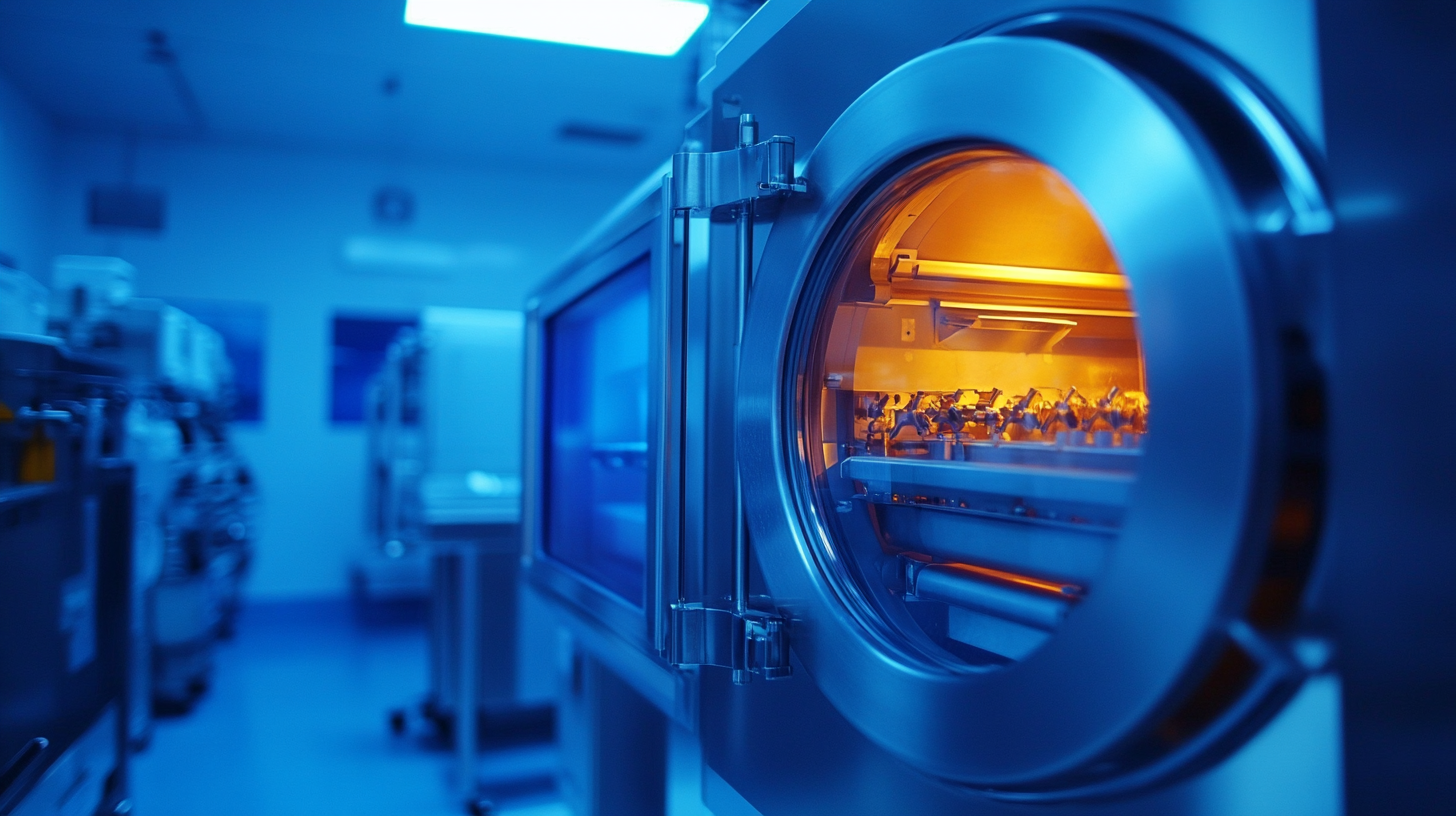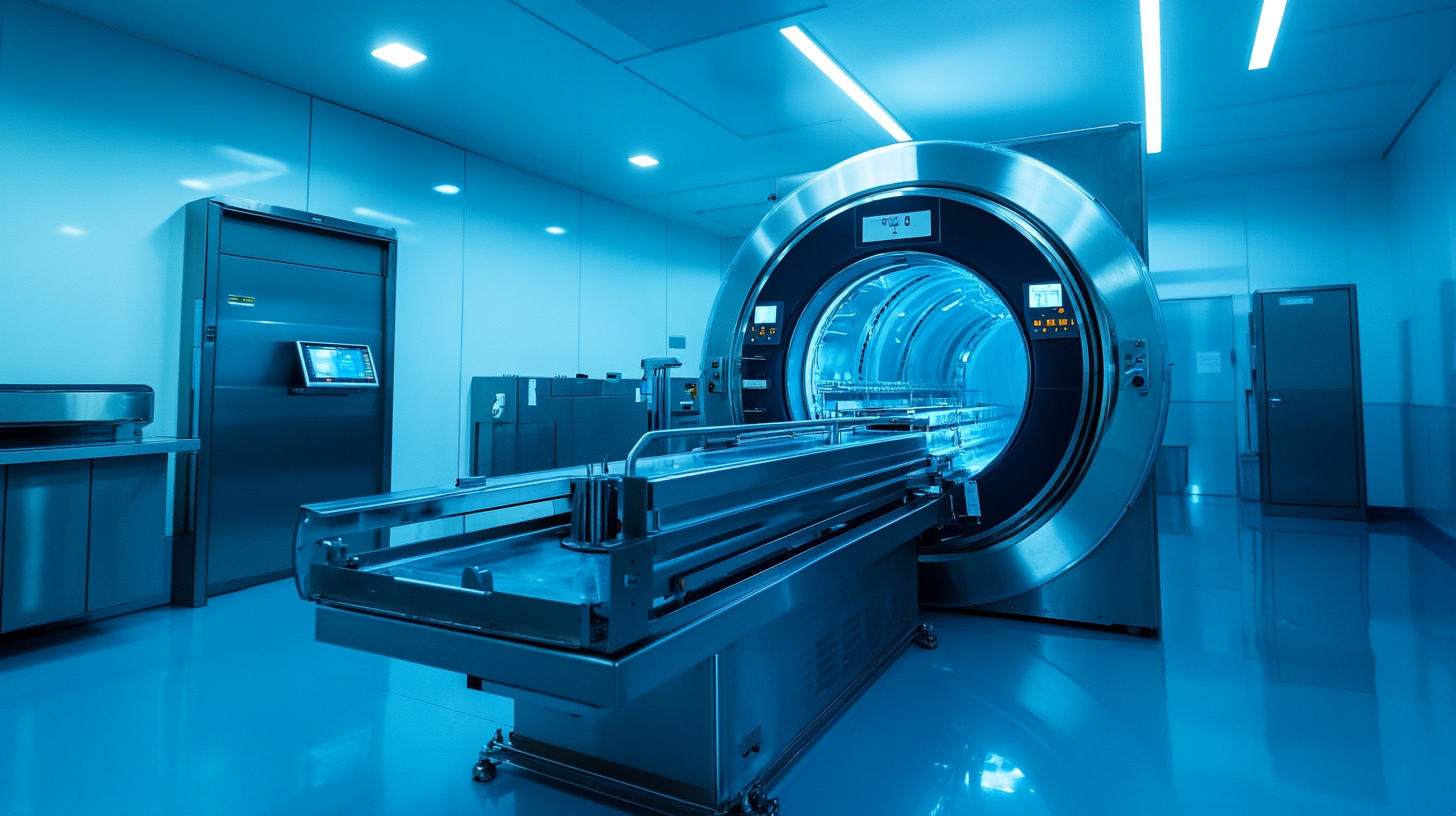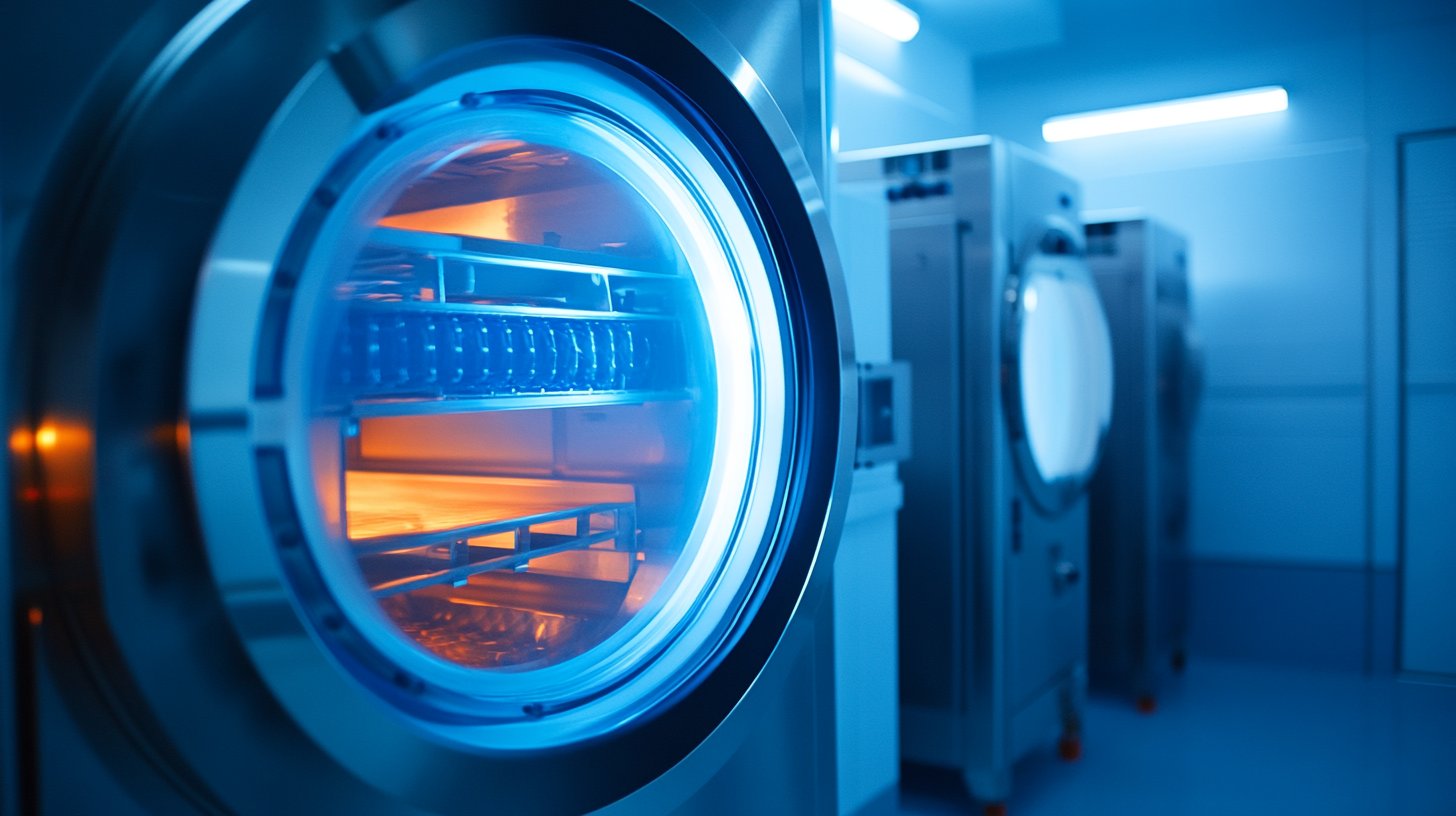- Home
- Products
- Services
- Product concept development
- Engineering
- Design for manufacturability
- Regulatory services
Read more - Material selection and formulation
- Prototyping
- Testing and validation
Read more - Production process development
- Custom tooling
- Manufacturing
- Finishing operations
- Assembly
- Packaging
- Private labeling
- Sterilization
Read more
- Resources
- Careers
- Search
Emerging Trends in Autoclave Sterilization for Global Buyers in 2025
As the global healthcare landscape evolves, autoclave sterilization remains a cornerstone of infection control and medical device safety. The recent report from Grand View Research indicates that the global sterilization services market is projected to reach USD 8.29 billion by 2025, growing at a CAGR of 10.6%. This underscores the increasing reliance on advanced sterilization methods such as autoclave sterilization, which utilizes high-pressure steam to effectively eliminate microorganisms, ensuring the safety of surgical instruments and equipment across medical facilities.
Emerging trends in autoclave sterilization are set to shape buying decisions for global stakeholders in 2025. With advancements in technology, such as the integration of IoT and real-time monitoring systems, the efficiency and efficacy of autoclave sterilization processes are rapidly improving. According to MarketsandMarkets, the demand for innovative sterilization solutions is surging, driven by heightened awareness of infection prevention and the stringent regulatory landscape. This blog will explore the vital trends influencing autoclave sterilization practices, providing insights that will empower global buyers to make informed decisions in the coming years.

Innovative Technologies Revolutionizing Autoclave Sterilization Processes
As we look ahead to 2025, the field of autoclave sterilization is poised for a significant transformation driven by innovative technologies. These advancements are not only enhancing the efficiency and effectiveness of sterilization processes but are also addressing the growing demand for higher safety standards across various industries, including healthcare and pharmaceuticals. One of the most revolutionary technologies emerging in this space is the integration of IoT (Internet of Things) capabilities within autoclave systems. These smart autoclaves can monitor and control sterilization cycles in real-time, providing data analytics that help operators maintain optimal conditions. By utilizing IoT, facilities can ensure compliance with strict sterilization protocols while minimizing human error, a crucial factor in ensuring patient safety and operational efficiency. Additionally, advancements in material science have led to the development of new sterilization materials that are not only more durable but also more eco-friendly. These materials support improved heating and cooling cycles, allowing for faster sterilization processes without compromising quality. Furthermore, innovations such as UV-C sterilization and plasma technology are gaining ground, offering alternatives that can complement traditional steam sterilization methods. These technologies reduce turnaround times and provide effective solutions for a wide range of applications. In conclusion, the innovations in autoclave sterilization set to emerge by 2025 promise to revolutionize the industry. By leveraging smart technology and sustainable materials, these advances are expected to further enhance the reliability and efficiency of sterilization processes, allowing global buyers to meet their stringent requirements while keeping pace with an ever-evolving landscape.

Key Market Drivers Influencing Autoclave Demand in 2025
In recent years, the autoclave sterilization market has witnessed significant transformations driven by various market forces. As we approach 2025, several key drivers are emerging that are expected to shape autoclave demand globally. First and foremost, the rising awareness of infection control, especially in healthcare settings, has heightened the reliance on effective sterilization methods. As more institutions prioritize patient safety, the demand for high-quality sterilization equipment, including autoclaves, will likely increase.
Additionally, technological advancements play a crucial role in driving the autoclave sterilization market. Innovations such as automated systems, advanced monitoring technologies, and eco-friendly sterilization processes are becoming increasingly popular. These developments not only enhance the efficiency and reliability of sterilization but also reduce the environmental impact, aligning with the broader trend of sustainability in various industries.
The growth of sectors such as pharmaceuticals, biotechnology, and food processing further fuels the demand for autoclaves. As these industries expand, the need for stringent sterilization protocols becomes paramount to ensure product quality and safety. This synergy between emerging market demands and the operational capabilities of modern autoclaves sets the stage for robust growth in the sterilization sector leading up to 2025 and beyond.

Sustainability Practices in Autoclave Manufacturing and Usage
As we move towards 2025, sustainability practices in autoclave manufacturing and usage are becoming increasingly crucial for global buyers seeking to minimize their environmental impact. Manufacturers are recognizing the importance of adopting eco-friendly materials and processes in the production of autoclaves. This shift not only helps to reduce waste and pollution but also aligns with the growing demand from consumers and regulatory bodies for greener solutions. By incorporating sustainable materials such as recycled metals and biodegradable components, companies can significantly reduce their carbon footprint while maintaining high standards of sterilization efficiency.
In addition to materials, the design and technology of autoclaves are evolving to meet sustainability goals. Modern autoclaves are being engineered for energy efficiency, with advanced insulation and smarter heating technologies that minimize energy consumption during operation. This not only cuts costs for users but also contributes to a more sustainable lifecycle for the product. Furthermore, manufacturers are implementing closed-loop systems that recycle water used during the sterilization process, which significantly conserves water and reduces the overall environmental impact.
The emphasis on sustainable practices extends beyond the manufacturing phase; it also influences how autoclaves are used in various industries. Training users to optimize sterilization cycles can lead to further reductions in energy and resource consumption. Buyers are increasingly looking for autoclave systems that offer monitoring and reporting capabilities, allowing them to track their usage patterns and identify opportunities for improvement. As sustainability becomes a focal point, the autoclave industry is poised to innovate in ways that benefit both the environment and the bottom line, making greener sterilization methods a priority for buyers around the world.

Future Regulations Impacting Autoclave Standards Globally
As we move towards 2025, the landscape of autoclave sterilization is set to evolve significantly, driven largely by emerging regulations aimed at enhancing safety and efficiency across various industries. One of the critical aspects of these future regulations is the international harmonization of standards, which will ensure that all manufacturers and users adhere to consistent protocols. This transition is essential for global buyers, as it simplifies the procurement process and promotes trust in the quality and reliability of sterilization equipment.
Additionally, regulatory bodies are increasingly emphasizing the need for sustainability within the sterilization process. New guidelines will likely focus on reducing energy consumption and minimizing the environmental footprint of autoclaves. Manufacturers will need to innovate and develop greener technologies that align with these regulations, catering to the growing demand from buyers for environmentally responsible solutions. Ensuring compliance will not only meet legal requirements but also enhance the brand reputation among conscientious consumers.
Finally, advancements in technology, such as the integration of smart monitoring systems and enhanced data analytics, will become a significant focus of future regulations. These tools will help users maintain compliance with sterilization standards while providing real-time insights into performance and efficiency. For global buyers, understanding these technological trends will be crucial in selecting the right autoclave solutions that align with evolving regulations and operational needs in the coming years.
Insights from Industry Leaders on Autoclave Efficiency and Safety
As the landscape of sterilization technology evolves, industry leaders are increasingly focused on enhancing autoclave efficiency and safety. In 2025, global buyers will look for systems that not only meet stringent regulatory standards but also incorporate cutting-edge technologies to optimize performance. Insights from industry veterans underline the necessity of integrating smart monitoring features that allow real-time tracking of sterilization parameters, significantly reducing the risk of human error and ensuring consistent, reliable outcomes.
Moreover, the push for sustainability is reshaping autoclave design and operation. Leaders in the field are advocating for autoclaves that minimize energy consumption and utilize eco-friendly materials. For buyers, understanding these innovations can lead to cost-effective choices that enhance their operational practices while adhering to environmental commitments. Additionally, the growth of remote monitoring capabilities means that users can ensure safety and efficiency from virtually anywhere, increasing convenience without compromising on quality.
With safety being paramount, advancements in autoclave technology often emphasize enhanced material integrity and robust safety mechanisms. Innovative features such as automatic locking systems and fail-safe protocols are now standard in high-quality models. As buyers prepare for the future, engaging with these industry insights will empower them to make informed decisions that align with both efficiency and safety expectations in their sterilization processes.







